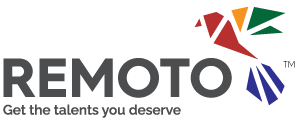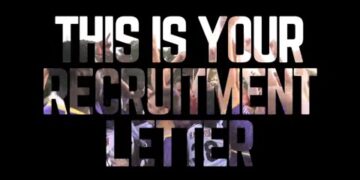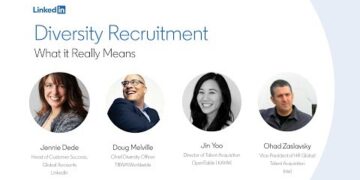Today, building a diverse and resilient workforce is more important than ever. One crucial aspect of achieving this is reaching across generational boundaries and fostering collaboration among different age groups. By bringing together individuals from various generations, organizations can benefit from a wide range of perspectives, experiences, and skills.
In this blog post, we explore effective strategies that can help expand your job market reach by successfully recruiting across generations. From understanding the unique attributes and aspirations of each generation to implementing inclusive hiring practices, we’ll explore practical approaches to attract and retain talent from diverse age groups.
By embracing the power of a cross-generational team, companies can tap into the collective wisdom, creativity, and innovation that comes from blending different generational perspectives. Together, let’s navigate the ever-evolving landscape of workforce diversity and create a workplace that thrives on the strengths and contributions of every individual, regardless of their age.
Breaking Down Generational Stereotypes: Building Bridges, Not Walls
Stereotypes about different generations exist. Baby boomers, born between 1946 and 1964, are often perceived as traditionalists, valuing hard work and loyalty. Gen Xers, born between 1965 and 1980, are sometimes labeled as cynical due to their skepticism toward institutions and authority.
Millennials, born between 1981 and 1996, are often characterized as entitled, seeking work-life balance and purpose-driven careers. Gen Z, born between 1997 and 2012, are seen as tech-savvy due to growing up in a digital age.
However, it’s important to recognize that these stereotypes can overshadows the unique strengths each generation brings to the table. Baby boomers offer a wealth of experience and wisdom gained from their long careers. Gen Xers are resourceful and independent, adapting to rapid changes in society.
Millennials bring innovation and a fresh perspective, fueled by their digital fluency. Gen Z, harnessing their technological expertise, offers creativity and adaptability in a constantly evolving world.
We must break free from these preconceived notions and focus on the individual skills, experiences, and perspectives that every person, regardless of generation, can bring. Only by embracing diversity can we fully tap into the collective potential and create a collaborative environment that drives growth and success.
If you want to learn more about the different generations, watch this video!
Embracing Diversity Beyond Age: The Power of Inclusivity
Reruitment is not about fitting people into predefined molds; it’s about embracing diversity. Instead of looking at generational differences as obstacles, view them as opportunities for growth.
You can create an inclusive workplace culture that values the distinct contributions of each generation. Highlight your business’ commitment to diversity to attract a broader range of candidates with these six strategies.
Strategy 1: Crafting Job Descriptions for All Ages
Job descriptions serve as the first point of contact between your company and potential candidates. Make sure they’re inclusive. Use language that appeals to a diverse audience, avoiding age-specific jargon that might alienate certain groups.
Highlight opportunities for learning and growth, catering to the aspirations of both seasoned professionals and those early in their careers.
Strategy 2. Appealing to Diverse Career Stages
When crafting job descriptions, strike a balance between seeking experience and nurturing potential. Clearly outline the expectations for the role, ensuring that candidates of all ages can envision their success in the position.
Mention opportunities for mentorship and skill development, showcasing your commitment to helping employees grow, regardless of their career stage.
Strategy 3: Leveraging Technology
In the era of remote work and digital communication, tech-savvy candidates are in high demand. However, it’s important to recognize that digital fluency isn’t exclusive to younger generations. Baby boomers and Gen Xers have adapted to technology over the years, and their experience often brings a unique perspective.
Leverage technology in your recruitment process while providing support and training for those who may be less familiar.
Strategy 4: Virtual Recruitment Fairs and Beyond
Virtual recruitment events are a fantastic way to connect with a wide range of candidates. They break down geographical barriers, making it easier for candidates from different generations to participate.
Make sure your virtual recruitment strategy is friendly for individuals of all ages. Provide clear instructions, tech support, and consider offering options for in-person interactions for those who prefer a more traditional approach.
Strategy 5: Flexible Work Arrangements
As the workforce continues to evolve, so do preferences for work arrangements. Some value the structure of a traditional office setting, while others thrive in a remote or hybrid environment. Recognize that these preferences often transcend generational lines.
Offer flexibility in work arrangements to accommodate a diverse range of lifestyles and personal needs. Tailoring work arrangements involves more than just remote options. Consider offering flexible hours, compressed workweeks, or job-sharing opportunities.
This flexibility not only attracts a wider pool of candidates but also fosters an inclusive workplace where individuals of all ages can thrive.
Strategy 6: Mentorship Programs
Mentorship programs are a powerful tool for facilitating knowledge transfer and collaboration across generations.
Pair experienced professionals with younger counterparts to create a mutually beneficial learning experience. Also, encourage reverse mentoring and continuous learning, where younger employees share their insights with senior colleagues, fostering a culture of continuous learning.
Mentorship programs break down barriers and create a sense of camaraderie among employees. They allow individuals from different generations to understand each other’s perspectives, working styles, and career aspirations. By fostering these connections, your organization can build a more cohesive and resilient team.
Conclusion: Embrace Diversity, Unleash Potential
Expanding your job market reach across generations is not just about meeting quotas; it’s about embracing diversity to unleash the full potential of your team.
Break free from generational stereotypes, use inclusive language, leverage technology, offer flexible work arrangements, and foster cross-generational collaboration through mentorship.
By implementing these strategies, you’ll not only attract a diverse pool of candidates but also create an inclusive and innovative workplace that stands the test of time.














